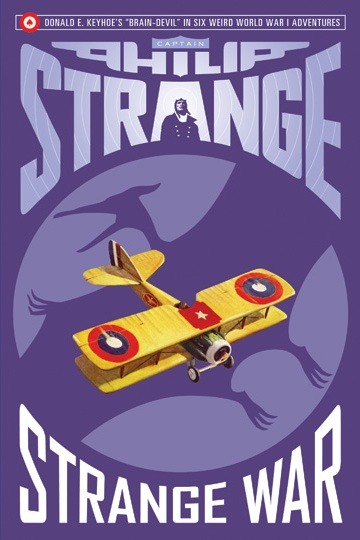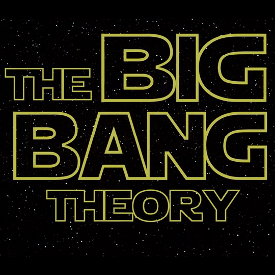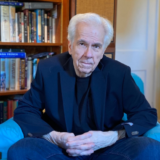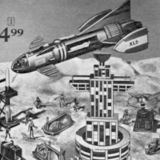 I have mentioned elsewhere that my participating as a contributor to the new Amazing Stories feels like one of those Six Degrees of Separation experiences. Once upon a time I worked for a technical publishing start up, The Cobb Group, which was eventually purchased by William Ziff, Jr., heir to the Ziff-Davis publishing empire. Ziff-Davis had been the owner of Amazing Stories from 1938 to 1965.
I have mentioned elsewhere that my participating as a contributor to the new Amazing Stories feels like one of those Six Degrees of Separation experiences. Once upon a time I worked for a technical publishing start up, The Cobb Group, which was eventually purchased by William Ziff, Jr., heir to the Ziff-Davis publishing empire. Ziff-Davis had been the owner of Amazing Stories from 1938 to 1965.
Fellows I’d once worked with at The Cobb Group later started an internet-based publishing business, Emazing.com, where I worked as Content Director. And now, here I am, a researcher on pulps writing for that first science fiction pulp magazine in its new incarnation: Amazing Stories. It might not be an exact circle, but I see the path as a sort of wobbly ellipse. Seen from the ecliptic.
Back to Amazing Stories:
That wandering preamble leads me to my topic today: Donald Keyhoe. But first, let me wander a bit more.
One of Amazing’s most notable periods was during the 1940s, when it was published by Ziff-Davis. This phase of the magazine’s existence was notable not necessarily because of the high quality of its fiction, but because of something known as the Shaver Mystery.
Barry Malzberg has written eloquently about the Shaver Mystery elsewhere on the Amazing Stories site, but in brief: Ray Palmer, Amazing Stories editor at the time, promoted the writings of Richard Shaver, who proposed the ancient history of Earth was populated by beings who lived in subterranean cities; who left the planet, but left their offspring–the noble Teros and the degenerate Deros–who remain present in our world today.
Circulation for the magazine soared for a time, but the whole campaign eventually crashed and burned. A few interesting notes about Shaver’s cracked ideas: one can see how his notion of subterranean cities reached back to various mythological cycles and cultural folklores about netherworlds, to the 19th Century theories of John Cleves Symmes, Jr. regarding a hollow earth, and back to H.G. Wells’ future beasts, the Morlocks, from The Time Machine. In the 1960s, Marvel Comics juggernaut Jack Kirby may have tweaked Shaver’s ideas in creating the minions that served the Mole Man, one of the recurring villains who battled the Fantastic Four; and in the 1970s, for a short-lived series titled The Eternals, Kirby described a war between the noble Eternals and the monstrous Deviants–both created in ancient history by the galaxy-roaming beings called Celestials.
Back to the Shaver Mystery. Although Astounding was building what some would call the golden age of science fiction, the mainstream popular media pointed to the Shaver Mystery as representative of the genre: you know, all that Buck Rogers stuff with rayguns and crackpot theories about the development of civilization.
A few decades later, Shaver could have published his ideas in a book that would have been shelved in the New Age section of stores. But that’s not the way it worked out.
The skepticism the mainstream world turned on Shaver’s ideas is similar to my attitude about UFOs. Even though I grew up reading comic books, Asimov, Clarke, and Bradbury, and watched every Ray Harryhausen movie that came on TV, I just couldn’t warm to the idea that the objects in those grainy photos were actual flying saucers.
I’ve always been a bit hard headed.
My disbelief didn’t stop me from enjoying The X-Files, but for my money, that’s where UFOs belonged: as a plot device for a TV series, as a way to get James Arness to the frozen Arctic as a scary walking turnip (The Thing from Another World, 1951), as an excuse for Gene Barry to run across a blasted landscape with Ann Robinson (The War of the Worlds, 1953) and for Harryhausen to wreck Washington DC (Earth Vs. the Flying Saucers, 1956).
Now back to Donald Keyhoe.
Because Keyhoe is credited with writing the book on which Earth Vs. the Flying Saucers was based. Curt Siodmak received the screen story credit.
Keyhoe was perhaps the best-known proponent during the 1950s and ‘60s for legitimizing the study of UFOs. He regularly called for the U.S. military to release to the public its documents on UFOs.
Apparently Keyhoe was at first as skeptical as I am that UFOs might have any extraterrestrial origins. But after some investigations, his opinions changed. This modified attitude led to his publishing articles about flying saucers and then a book, The Flying Saucers are Real (1950).
People paid attention. After all, Keyhoe was a retired member of the military, having studied at the United States Naval Academy and served in the Marines. In the 1920s, he’d worked with Charles Lindbergh on the latter’s tour across the country. And he served in Naval Aviation during World War 2 and retired with the rank of Major.
So with those credentials, he couldn’t be just your run-of-the-mill crackpot, could he?
Eventually Keyhoe accused the military of covering up what it new about UFOs. Later, he blamed the CIA for the conspiracy of silence.
Along the way, Keyhoe lost some of his credibility.
This association with a topic about which I remain skeptical is what I knew about Donald Keyhoe for most of my life.
But then those stalwarts at Age of Aces, a small press dedicated to pulp-era aviation fiction, saved Keyhoe’s reputation for me.
Before the world of UFOs clutched the popular consciousness, before the Shaver Mystery rose up from the depths, Donald Keyhoe wrote fiction for the pulp magazines. Primarily he wrote aviation stories.
During the 1930s, air war was a popular genre among the pulps, and several magazines were dedicated to this type of story. Keyhoe’s ties to military aviation and to Lindbergh made the aviation magazines a natural field for him to work as a storyteller. He wrote a lot of air war stories. One character about which he wrote an extended series of stories was Captain Philip Strange.
Strange was a spy for the Allies. Not only was he a master of disguise–a requirement for any pulp magazine hero–but he had a facility for languages gained during his youth, when he toured Europe in the pre-war years as a stage performer, The Mental Marvel.
In Age of Aces’ first volume of Strange’s adventures, Strange War, the spy called The Brain-Devil by the Germans encounters a variety of inexplicable threats to the Allies. For example, a number of pilots are brought down by what appears to be a pterodactyl. Mystic fireballs create havoc in another story. But in each case, Strange unravels the mystery and reveals that the threats have rational explanations. Although, it must be admitted, the rational explanations sometimes rely on what would have been a bit of superscience for the time. But that was okay for the pulps.
However, in each story, Keyhoe pulled away the façade to show that what seemed fantastic actually had a down-to-earth explanation.
Consider his stance years later, when he rationalized that extraterrestrials must be the source of flying saucers and UFOs.
I don’t know enough about Keyhoe to understand what may have happened between his pulp writing years and his UFO years to make him perform what seems to be an about-face on his philosophy about unexplained phenomena. Admittedly, his initial call for the military to open its files on UFOs seems to follow the trajectory of his methods from his earlier career with the military. But the switch to conspiracy theorist?
Whatever Keyhoe’s later obsessions, his stories about Philip Strange provide captivating fun and adventure. For instance, the second volume, Strange Enemies, traces his encounters with a femme fatale, Fraulein Doktor, “Germany’s most alluring and elusive spy.” She is Catwoman to Strange’s Batman. Adding fuel to the fire is the fact the two knew one another before the war, when Strange was touring Europe.
That’s not conspiracy theory. That’s entertainment.











Thinking of Keyhoe appearing on a wrestling show makes me chuckle. Somehow, it seems right in character. And the artifice of TV wrestling during the 1960s seems to go hand-in-hand with the stereotype of the UFO crackpot that Keyhoe, unfortunately, came to represent. Thanks for the info, Bill!
Keyhoe must've been a real character. I first saw him on a TV wrestling show in the late 1960s,talking about flying saucers. I didn't learn that he was a pulp writer until much later.
Why was Keyhoe on a wrestling show? I can't say for sure. I can tell you that the show came out of Pittsburgh and was hosted by Bill Cardille, who also hosted a Saturday night movie block called "Chiller Theater." It may that Keyhoe came in to do a spot for "Chiller Theater" and ended up doing both shows.